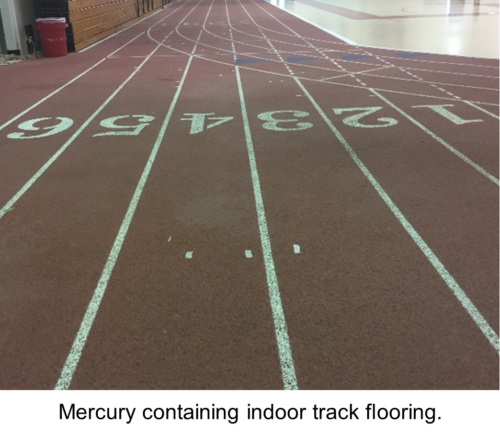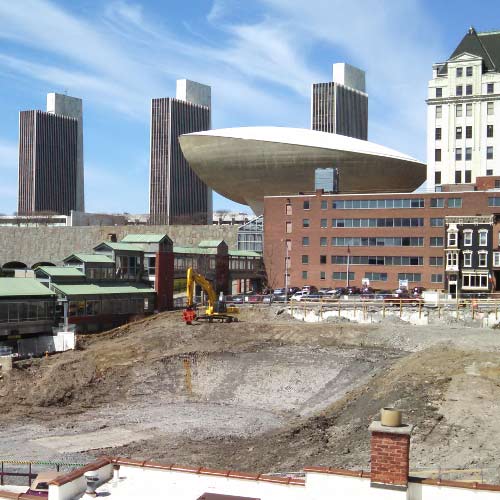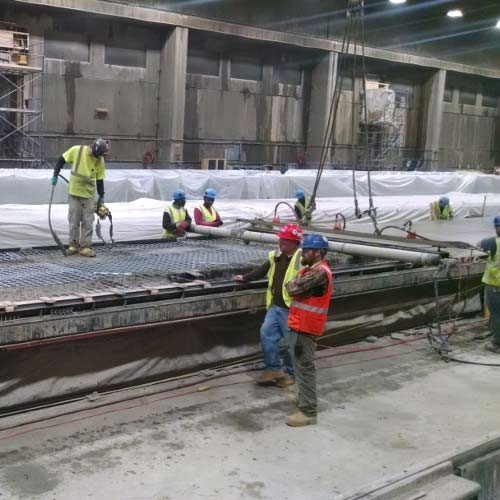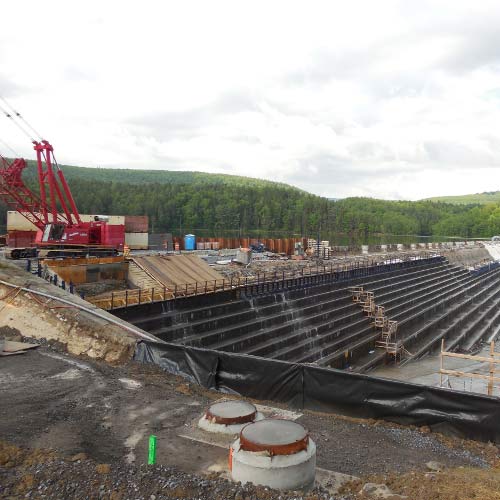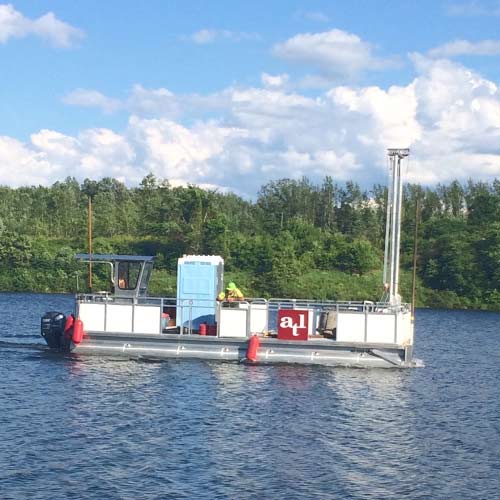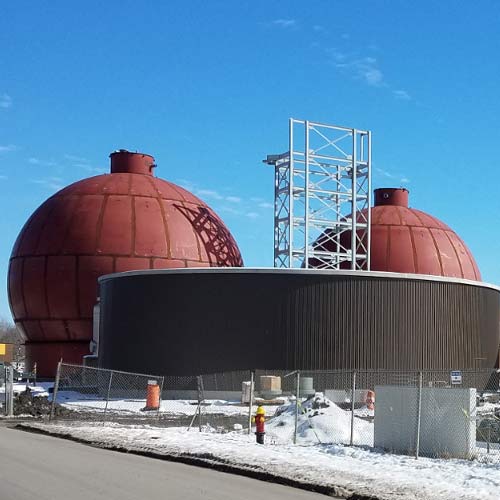Click the following link to view the PDF of this paper: Mercury in Flooring

Cheyenne J. Dashnaw, PE
Senior Engineer
Atlantic Testing Laboratories
Mercury in flooring represents a concern due to the potential for emission of mercury vapor to surrounding areas of a building. Mercury is a neurotoxin and exposure can have various health effects. Not all flooring materials with mercury will emit mercury vapor at a level that would represent a health concern; however, the presence of mercury in a material subject to routine foot traffic should warrant consideration of potential adverse effects and whether further investigation, mitigation, and/or remediation should be conducted.
The type of flooring that has been attributed to mercury-related concerns is a rubber-like polyurethane material that utilized a phenyl mercuric acetate catalyst (PMA). The manufacture of this type of flooring is completed by combining two liquid resins with the addition of the catalyst PMA to facilitate a chemical reaction to harden the liquids into a resilient flooring material. Since catalysts are not consumed during the chemical reaction, the PMA does not become entirely bound within the material matrix and consequently results in the potential for mercury vapors to be emitted during and after installation of the flooring material.
Several states have provided guidance for the evaluation or management of mercury-containing polyurethane flooring, especially relative to public schools, as there is a heightened concern to risks for children. Schools have multiple areas where this type of flooring has been commonly installed (e.g., gymnasiums, cafeterias, auditoriums, indoor tracks, multi-purpose rooms). In New York, the New York State Education Department issued a memorandum, dated June 11, 2019, and addressed to district superintendents, that provided guidance subsequent to consultation with the New York State Department of Health (NYSDOH). The memorandum summarizes background information pertaining to mercury-containing polyurethane floors and references a NYSDOH recommendation to assess mercury exposure potential by following guidance developed by the State of Minnesota, as New York State does not have an established standard for mercury exposure.
The Minnesota Department of Health developed guidance titled “Mercury Flooring Testing and Mitigation: Guidance for Environmental Professionals.” This guidance is referenced specifically to floors in school gyms and includes recommendations for sampling and analysis and subsequent management. The guidance suggests a mercury concentration of 20 parts per million (ppm) as the threshold in flooring material that is indicative of a likelihood for exposures to mercury reaching levels of concern. If the flooring has greater than 20 ppm mercury, testing mercury vapor concentrations under various conditions is recommended.
Aside from general guidance for assessment and management of mercury-containing flooring, a bill banning the installation of mercury flooring in schools was signed into law for New York State in November 2019. NY Environmental Conservation Law 27-2119, Phase-Out of Mercury-Containing Flooring, establishes the following:
- No public or non-public elementary or secondary school shall install a mercury-containing floor nor shall any school install a floor over a mercury-containing floor prior to removal of the mercury-containing floor.
- The time weighted average mercury vapor exposure for an employee or student of a public or non-public elementary or secondary school shall not exceed 750 ng/m3.
Relative to existing guidance and requirements in New York State, in addition to the exposure potential for occupants of a building, the ideal management option for mercury-containing flooring is remediation via removal. Remediation of a mercury-containing floor system should include consideration of work area containment and isolation, methods to minimize and control mercury vapor emission, condition of materials underlying the mercury-containing floor and potential impacts, monitoring of the remediation area and remediation work, post-remediation cleaning and clearance, and waste characterization and disposal. With the ease in which mercury vapor can be generated and migrate, methods for the assessment and remediation of mercury-containing materials should be developed and implemented by experienced professionals.
If you have a project with known or suspect mercury-containing floor materials to be assessed or remediated, ATL, a WBE certified company, has environmental professionals located throughout New York State who can perform assessment, develop plans and specifications for removal, and provide remediation monitoring.
For more information, contact Cheyenne Dashnaw, PE at 315-386-4578, info@atlantictesting.com, or visit AtlanticTesting.com.
|
ASSOCIATED SERVICES
|
 |


